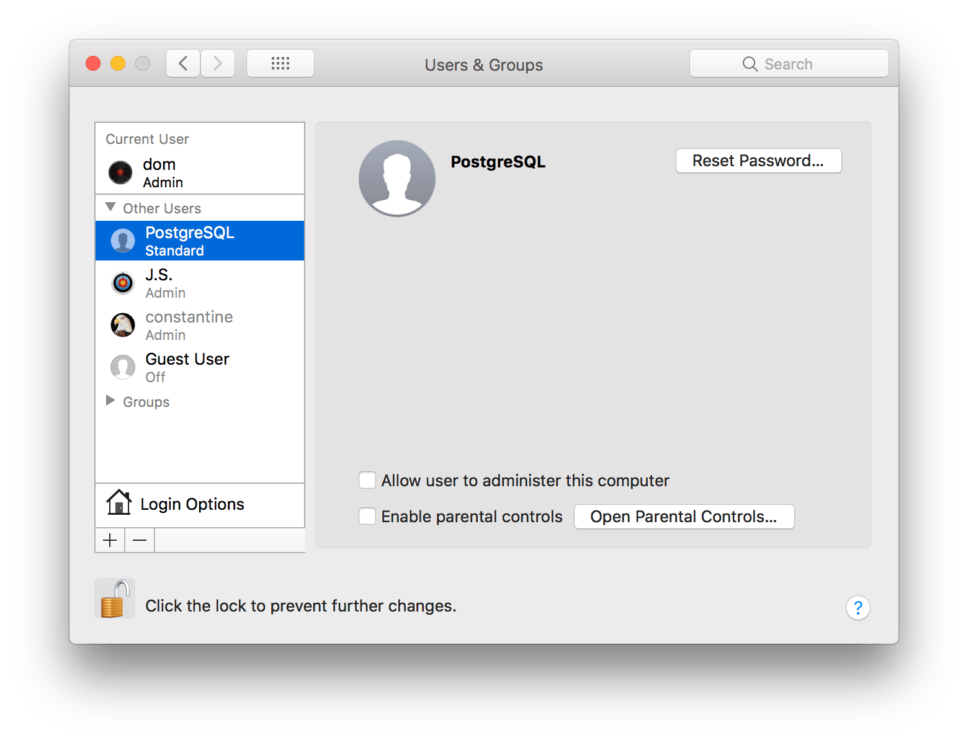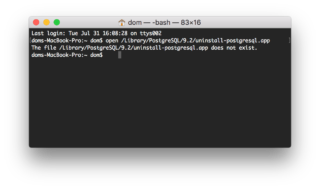
If you’re using Windows, type uninstall or remove into the search bar at the bottom left-hand side of the screen:
UNINSTALL POSTGRES APP MAC WINDOWS
Uninstall and remove PostgreSQL from Windows


Navigate to the assigned directory for the PostgreSQL data, and then use the rm command to delete all of your databases and tables. Once you’ve located the package, use YUM’s remove command to uninstall PostgreSQL from your Linux system: Uninstall the PostgreSQL package using YUM remove You can use the apt-get command to completely remove PostgreSQL on a Debian-based distribution of Linux such as Linux Mint or Ubuntu: Uninstall and remove PostgreSQL on Debian Linux NOTE: Be sure to elevate the privileges for any of the commands in this article with sudo if the terminal returns a Permission denied error.
UNINSTALL POSTGRES APP MAC HOW TO
In this article, we’ll explain how to uninstall PostgreSQL from Linux, macOS and Windows operating systems. It’s important to know how to uninstall PostgreSQL properly to make sure all components of the package are completely removed and you don’t encounter any errors. If you’re using PostgreSQL, you may need to remove the package from your system at some point. Note: you’re not going to remove apps from devices just because you cleared them from the table. This allows you to clear out any information stored in its own table, such as printers, tasks, sessions, widgets, etc. For example: psql -U krypted -d device_management -c “delete from public.ios_applications”This works for most of the tables within Profile Manager. psql -U krypted -d device_management -c 'delete from public.ios_applications where id=2 'Simply re-run without any constraints around your SQL query to clear out all of the application. Remove the configuration file that keeps track of the database version you are using: rm /etc/postgres-reg.ini 5. The Wizard will notify you that these were not removed. Open the uninstaller and follow instructions to remove the application. Once you see which apps have which unique id’s, you can then remove entries using their identifiers (this time we’re throwing in a delete instead of select using the -c): This expands to output a list of each row in the iOS_applications table. But this time I’m injecting the SQL query into the psql command using the -c option. To see which applications have been installed and which have each id: psql -U krypted -d device_management -c 'select * from public.ios_applications limit 1000 offset 0 'The above command is a standard psql command, as shown in a previous article I worked on in a previous post. For example, if you are upgrading or maybe just accidentally upload an app that you don’t want people to see for the rest of the existence of the Profile Manager server.

There are a number of environments where this can be annoying. There aren’t any options in Lion Server’s Profile Manager to remove applications.


 0 kommentar(er)
0 kommentar(er)
